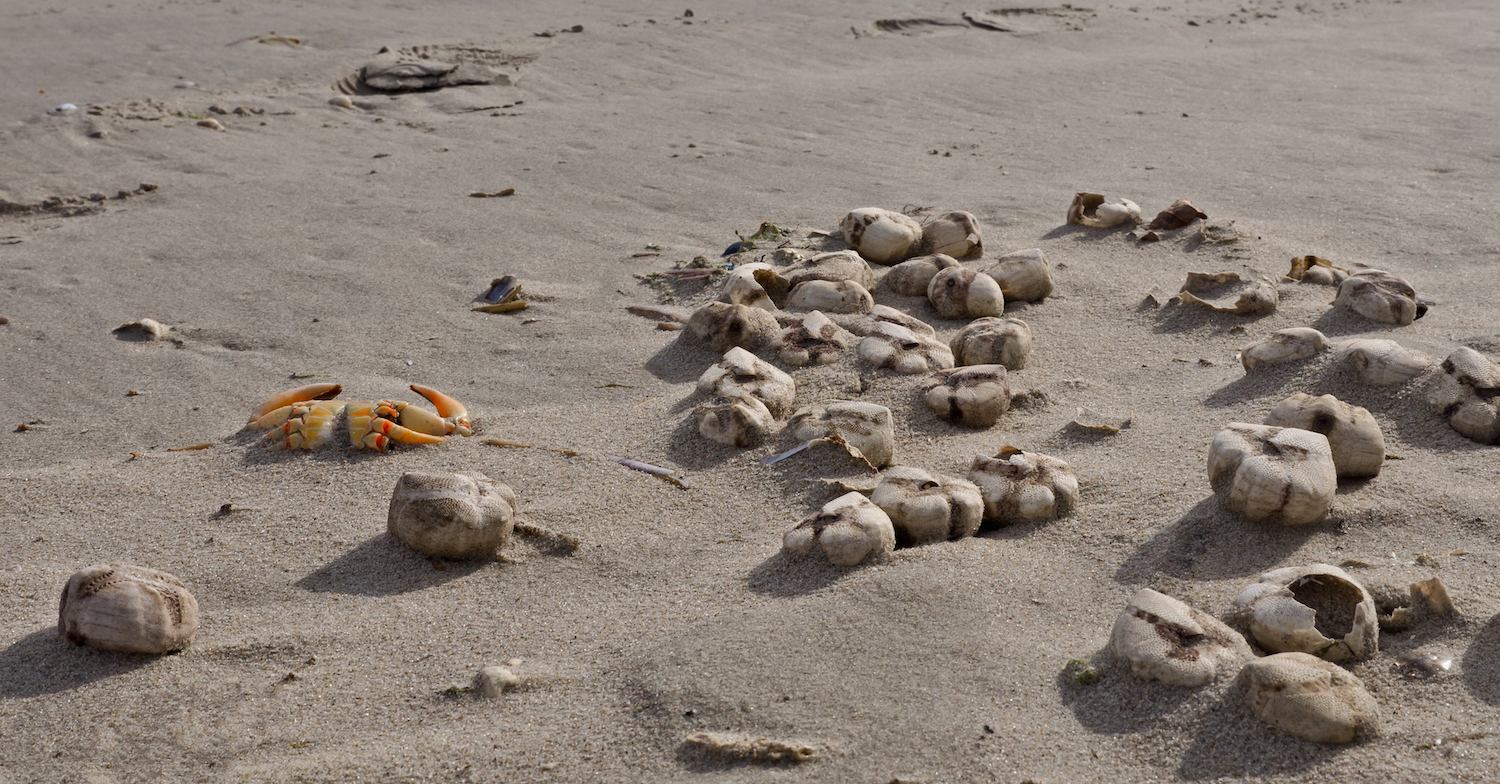Why Are Hundreds of Weird, Heart-Shaped 'Sea Potatoes' Washing Ashore in England?
Hundreds of bizarre, tennis-ball-size critters washed up on a beach in Cornwall, England, this past weekend, surprising beachgoers, who didn't know what to make of the creatures, according to news sources.
"I wasn't sure what they were," Rosie Hendricks told the BBC after visiting a beach in Penzance, Cornwall, with her family.
But these heart-shaped animals aren't a mystery to marine biologists, who colloquially call the creatures "sea potatoes," or "heart urchins" (Echinocardium cordatum) because of their distinctive heart-shaped bodies. [Gallery: Sea Urchins]
Sea potatoes are basically sea urchins that live out their days buried in the mucky sand around the coast of several European and Asian countries, including the United Kingdom, Ireland and Japan, according to SeaLifeBase, a website managed by the WorldFish center, in Malaysia, and the Fisheries Centre at the University of British Columbia, in Canada.
Sea potatoes are "cousins of the spiny and spiky ones you see on rocks and also related to starfish," Martin Attrill, a professor of marine ecology at the University of Plymouth in England, told Mashable.
E. cordatum can bury itself about 9 inches (22 centimeters) beneath the seafloor — an ability that makes the urchin "one of the important ecosystem engineers in seafloor environments," according to a 2017 study in the journal PLOS ONE.
The heart-shaped creature pulls off this feat by using an internal hydraulic system "where water power can move lots of [its] little feet in and out," Attrill said. "The sea potato uses these tube feet to feed off organic matter in the sediment," he added.
Get the world’s most fascinating discoveries delivered straight to your inbox.
Just like whales and dolphins, however, E. cordatum can have mass stranding events. In 2016, for example, Long Rock Beach in Cornwall experienced a similar stranding, the BBC reported.
It's possible that the stranding was a mating event gone wrong. Sea potatoes come together to breed, so a storm may have washed them ashore, Attrill told the BBC in a separate interview.
Interestingly, dead sea potatoes look different from live ones. When E. cordatumis alive, it's covered with short, yellow-brown spines. In contrast, when it dies, E. cordatum loses its spines and takes on the appearance of an off-white, brittle orb. Then, "you can see a five-pointed star pattern that gives away their relationship with starfish," Attrill told Mashable.
Twitter user @ToniTurnerBiz also spotted them on the beach in Penzance, as did her pooch. On Aug. 11, she tweeted, "I saw the sea potatoes this morning on #Penzance beach, Poppy thought they were worth investigating."
Original article on Live Science.

Laura is the managing editor at Live Science. She also runs the archaeology section and the Life's Little Mysteries series. Her work has appeared in The New York Times, Scholastic, Popular Science and Spectrum, a site on autism research. She has won multiple awards from the Society of Professional Journalists and the Washington Newspaper Publishers Association for her reporting at a weekly newspaper near Seattle. Laura holds a bachelor's degree in English literature and psychology from Washington University in St. Louis and a master's degree in science writing from NYU.



